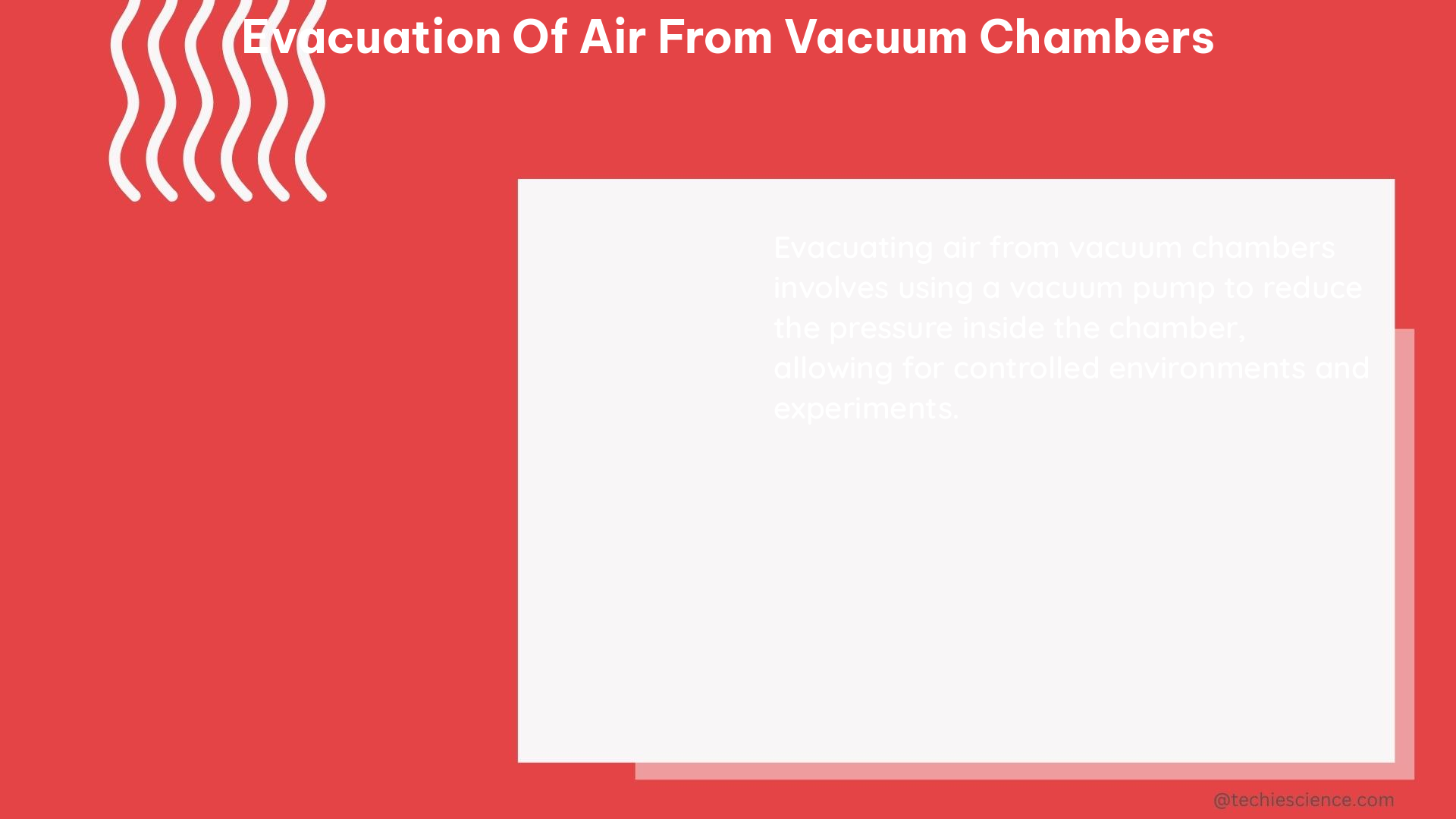Evacuating air from a vacuum chamber is a critical process that requires careful consideration of various factors, including pumping speed, conductance, thermal effects, and desorption. These factors can significantly impact the time required to evacuate the chamber to a specific pressure, and understanding them is essential for achieving optimal vacuum conditions.
Pumping Speed: The Key to Efficient Evacuation
Pumping speed is a crucial factor in evacuating a vacuum chamber. The simplified equation used to calculate evacuation time assumes a constant suction speed. However, a more accurate calculation can be performed by applying the equation to multiple segments of the typical speed curve of a specific pump type. Different pump types, such as oil-lubricated rotary vanes, dry scrolls, screws, and multistage roots, will have unique impacts on evacuation time.
For example, oil-lubricated rotary vane pumps typically have a higher pumping speed at lower pressures, making them well-suited for evacuating chambers from atmospheric pressure to around 10^-3 mbar. Dry scroll pumps, on the other hand, excel at maintaining a high pumping speed in the 10^-3 to 10^-6 mbar range, making them ideal for applications that require a deeper vacuum. Screw pumps and multistage roots pumps are often used in combination with other pump types to achieve even lower pressures, down to the 10^-9 mbar range.
Conductance: The Invisible Barrier to Evacuation

Conductance is another important factor to consider when evacuating a vacuum chamber. Conductance measures the degree to which an object conducts electricity and is measured in siemens or mhos. When calculating vacuum chamber evacuation time, the conductance of pipe works, valves, and other system components must be taken into account.
Each connected component between a pump and a vacuum vessel reduces effective pumping speed and increases evacuation time. For example, a 2-meter-long, 25-mm-diameter stainless steel pipe has a conductance of approximately 3.5 liters per second (L/s) at 10^-3 mbar, while a 1-meter-long, 50-mm-diameter pipe has a conductance of around 20 L/s at the same pressure. Choosing the right pipe size and minimizing the number of components can significantly improve the overall conductance of the system and reduce evacuation time.
Thermal Effects: The Cooling Conundrum
Thermal effects can also impact the evacuation time of a vacuum chamber. When gas mass is removed from a volume, the internal energy and temperature of the remaining gas are impacted. In slow evacuation processes, the temperature drop is compensated by a heat transfer from the chamber walls. However, if the process is faster than a few minutes, the gas that has to be pumped will gradually cool, reducing the effectiveness of the system’s pumping speed.
This cooling effect can be mitigated by using a cryogenic pump or by actively heating the chamber walls to maintain a constant temperature. For example, a vacuum chamber with a volume of 100 liters and a wall temperature of 300 K (27°C) will experience a temperature drop of approximately 10 K (10°C) during a 5-minute evacuation process, assuming a constant pumping speed of 10 L/s.
Desorption: The Invisible Culprit
Desorption is the release of an adsorbed substance from a surface. All materials in a vacuum release gases from their surfaces, with water vapor being the primary component of desorption. Desorption is the dominant source of gas in high and ultra-high vacuum conditions, and it can significantly impact the time required to achieve the desired vacuum level.
To minimize the effects of desorption, it is essential to properly clean and prepare the vacuum chamber and its components before evacuation. This may involve baking the chamber at elevated temperatures (typically 200-400°C) to drive off adsorbed water and other contaminants. Additionally, the use of materials with low outgassing rates, such as stainless steel, can help reduce the impact of desorption on the evacuation process.
Case Study: Identifying Leakages with Data Loggers
An example of evacuating a vacuum chamber can be seen in a case study where a data logger was used to identify leakages in the chamber. The MSR255 data logger was used to monitor temperature and pressure values throughout the evacuation process, checking the quality of the seal and identifying any pressure losses caused by leakages.
By analyzing the data collected by the data logger, the researchers were able to pinpoint the location of the leakages and take corrective actions to improve the vacuum system’s performance. This case study highlights the importance of using advanced monitoring tools to optimize the evacuation process and ensure the integrity of the vacuum chamber.
In summary, evacuating air from a vacuum chamber requires a deep understanding of the various factors that can impact the process, including pumping speed, conductance, thermal effects, and desorption. By carefully considering these factors and using advanced monitoring tools, vacuum system operators can achieve optimal vacuum conditions and ensure the success of their applications.
Reference:
- Understanding the Effects of Air Exposure
- Calculating Evacuation Time for Vacuum Chambers
- Data Loggers Help Identify Leakages in Vacuum Chambers

The lambdageeks.com Core SME Team is a group of experienced subject matter experts from diverse scientific and technical fields including Physics, Chemistry, Technology,Electronics & Electrical Engineering, Automotive, Mechanical Engineering. Our team collaborates to create high-quality, well-researched articles on a wide range of science and technology topics for the lambdageeks.com website.
All Our Senior SME are having more than 7 Years of experience in the respective fields . They are either Working Industry Professionals or assocaited With different Universities. Refer Our Authors Page to get to know About our Core SMEs.